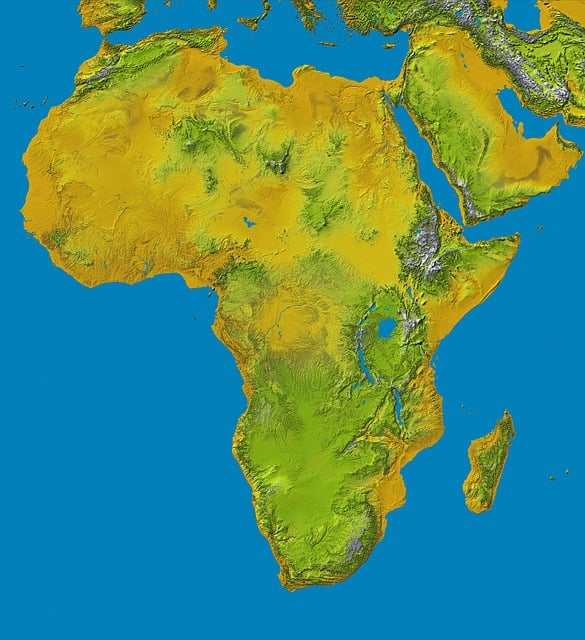The nature of slavery is not always understood. At the time the trade developed, both Africans and Europeans had a tradition of slavery, but the traditions were different. African slavery was a domestic institution. It was necessary to do something with captives of war, criminals, and wrong doers. The African answer was to turn them into slaves, which meant giving them a humble status in which they were removed by kinsmen. This way, they could be carefully watched. The word slave meant they were attached to domestic groups by non-kinship and there was some element of servitude. European slavery was a very different institution and led to chattel slavery.
A historian, David Blight, once said, “We have to face the story of slavery as part of our past because it is part of who we are.” He went on to say, “Our history as a nation is the like the history of other people and other nations. We have a history of contradictions. We have a history fraught with tragedy as well as some triumph.” It is our responsibility to not only study and understand our history, our triumphs and victories, but we must also study our mistakes and tragedies and learn lessons or we risk falling again.
According to Orlando Bagwell, Executive Producer of Africans in America, legal enslavement lasted in this land until the passage of the Thirteenth Amendment in 1865. In the Black communities, for many years, there was shame and embarrassment about the memory of enslavement. In the white community, there was often fear and hatred of Black freedom. This was expressed through racism or denial of past behavior of their ancestors.
We hear that slavery began in Africa. What must be known is it was not chattel slavery. The development of slavery in Africa was tied to the social caste and forces of nature. In many African societies, there were rules that dictated how slaves were to be treated. They were required to part of the family, through adoption or marriage. Every person was entitled to food, clothing, and shelter. Slave owners had to be responsive and accessible. Slaves were used to facilitate the development and distribution of goods. They were called domestic slaves and could own property, marry, own slaves themselves, or inherit a substantial bounty at the discretion or death of the master.
Domestic slaves were not considered faceless property. Many were adopted into
the family and enjoyed the same privileges. Slavery that existed in Africa
before the arrival of European traders was temporary. They were still humans
who were in charge of their destinies, had self-esteem, and dreams.
Portugal started the European slave trade. Prince Henry of Portugal participated in his country’s first trip to Africa. Reportedly, as an explorer, he wanted to discover what mysteries and riches Africa had to offer. He wanted to test the strength of Africa’s Muslim presence, look for gold, and establish colonies that would strengthen Portugal’s imperialistic power. Pope Nicholas V issued a document legalizing the enslavement of heathens and atheists. This opened the door for Portuguese operated slaving stations. By 1444, there was a thriving market in African slaves in Portugal.
After the death of Prince Henry, a stunning fort called Sao Jorge da Mina, was erected in the region where gold had been mined many years by Africans. It was built facing the sea to prevent some protection from other European interlopers. It also served as the first of many slave centers along the West African coastline. The castle was controlled by the Portuguese, Dutch, and the British. It was built with the knowledge and consent of the native African chief.
During this time, historians report that Africans and Europeans stood together as equals. Kings of the two continents were tied into a common economy. New worlds opened for both Africans and Europeans. Eventually, tribe stalked tribe and more than 20 million Africans were kidnapped in their own homeland. Half died before reaching the coast. Other Europeans took note of the slave market. By the beginning of the sixteenth century, approximately 200,000 Africans had been taken from their homes and transported to Europe and the Atlantic islands.
Columbus’s voyage took him and his crew to Brazil. The land was inhabited by Native Americans and Jesuit missionaries. Interest turned to the highly profited cultivation of sugar. This required intensive labor and there was not enough local manpower. Native Americans wouldn’t volunteer for duty and many fled into familiar countryside to escape slavery. Those who didn’t flee were withered under the white man’s irrational demands. They were abused, tortured, and murdered. They also succumbed by European diseases. The sugar plantation could not operate efficiently without a strong workforce. The answer was in African slaves.
The Portuguese had started the slave trade but other European countries had begun settlement of the New World and an economy based on slavery was growing. Portugal pulled out, but the rest of Europe stepped in.
Francie Mae. January 29, 2023
References
Bohannan, Paul. 1964. The American Museum of Natural History. Africa and Africans. Garden City, New York. The Natural History Press. Johnson, Charles and Smith, Patricia. 1999. WGBH Series Research Team. Africans in America. America’s Journey through Slavery.WGBH. Boston, Massachusetts. Harcourt Brace & Company
